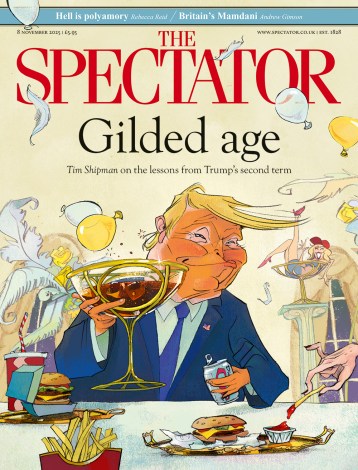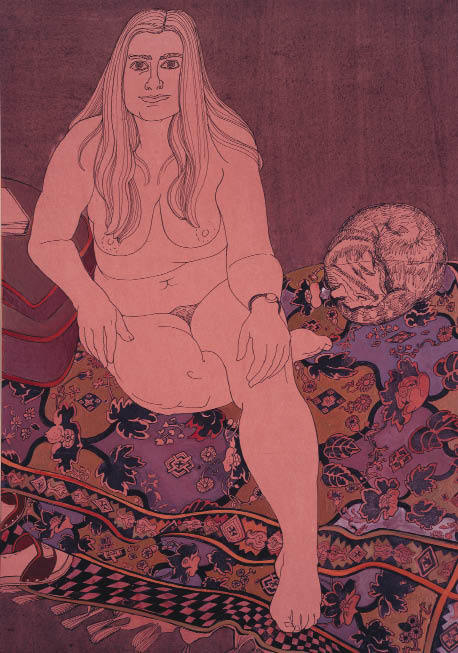This book collects nearly 300 examples of Alasdair Gray’s work as a painter and illustrator.
This book collects nearly 300 examples of Alasdair Gray’s work as a painter and illustrator. As an art student in 1950s Glasgow, he scorned the conservatism of tutors who painted the way ‘Monet might have painted had he been timid and Scottish, with an inferior grasp of colour and design’. Instead of traditional still lifes and landscapes, he produced devious biblical scenes populated with weird and sinewy figures inspired by Blake, Breughel and Bosch. Gray remarks that his mother’s death when he was 17 gave him a horrified fascination — further fuelled by his eczema — with ‘bones, nerves, veins, glands… [the] muscular and connective tissues that amount to a human being’. A lecturer asked if he ‘needed to make people look ugly and tortured’.
That description hardly applies to the work that Gray went on to produce after his degree. The lines in his portraits are pleasingly simple; there is little shading, and a lot of blank space. It is, he explains, an aesthetic rooted in the problem of needing to earn your keep: ‘To paint steadily like Cézanne requires an unearned income.’ The cash nexus is a recurring theme here; we read a lot about wrangles with administrators who hold the purse strings of publicly funded art. One solution, in lieu of a windfall, is to draw people ‘by swiftly putting a line round them’ and making the background ‘look like skin with [the] surrounding colours and tones’.
The famous Glaswegians thus represented are among many attractions here. We see a pinstriped Teddy Taylor in Castlemilk, a stately-looking Edwin Morgan, and James Kelman with a quizzical air, volumes of Kafka and Beckett visible on the bookshelf behind him. There are also several studies of Gray’s wife, Inge, who died in 2000. One shows her reading Bellow’s Herzog, heavily pregnant with their son, Andrew, who later poses dutifully throughout his childhood and teenage years (he looks especially long-suffering as a 17-year-old Mod in 1980). Women seemed to like sitting naked for Gray, especially after 1970, when he and Inge divorced. A publisher rejects a manuscript and a friend advises him that ‘the best cure would be to paint another nude’.
There is the sense — as readers of Gray’s fiction would expect — of a warm and eccentric intelligence at work. A portrait of the Greek Cypriot hotelier Reo Stakis frames him in a collage made from his own advertising materials; the brochure for Glasgow’s Grosvenor Hotel has tiny flames painted on its photograph, to commemorate the fire that burned it down in 1978.
Some of the most striking pictures take Glasgow itself as their subject. One shows the old Templeton’s factory at Glasgow Green that once supplied carpet to colonial parliaments and cruise ships built on the Clyde; the site is now a development of luxury flats. A similarly vanished era is preserved in an eerie painting of the Daily Record’s newsroom, where the staff are busy writing with pens: there doesn’t seem to be a typewriter in sight, let alone a computer screen.
Dues are paid to many patrons and friends who have supported Gray over the years, including the painter and sculptor Alan Fletcher, who died in 1958 after falling from a wall outside a hostel in Milan. Gray reproduces a news report from the Glasgow edition of the Daily Express, headlined ‘BEARDED CITY ARTIST PLUNGES TO DEATH’. ‘British beards,’ he explains, ‘were only common among artists, naval commanders and destitute folk, so journalists thought them newsworthy’. The wry humour, at one of the book’s sadder moments, exemplifies the winning tone of this absorbing ‘autopictography’, whose high production values and coffee-table heft should see it purchased for many a bibliophile come Christmas.





Comments